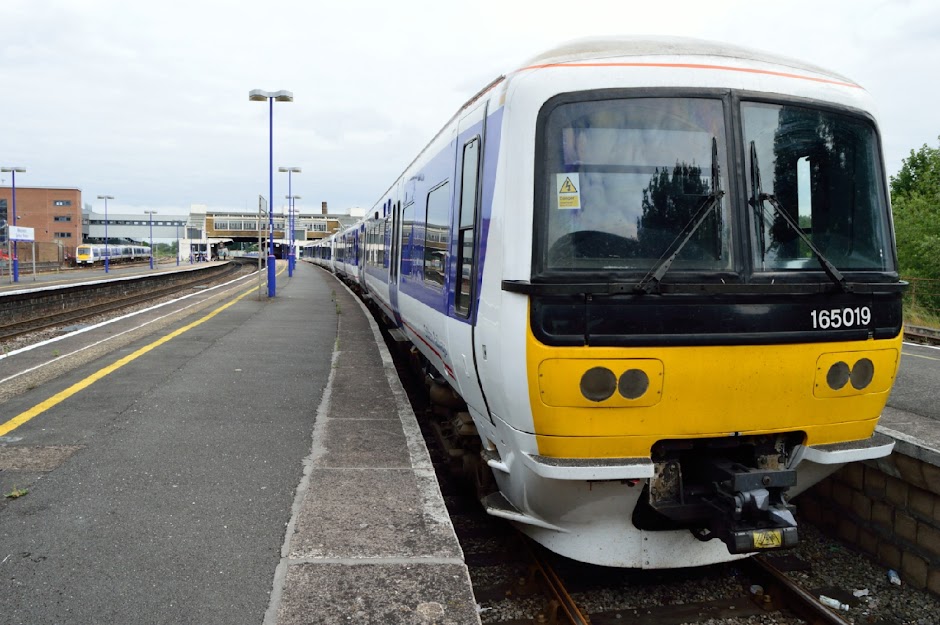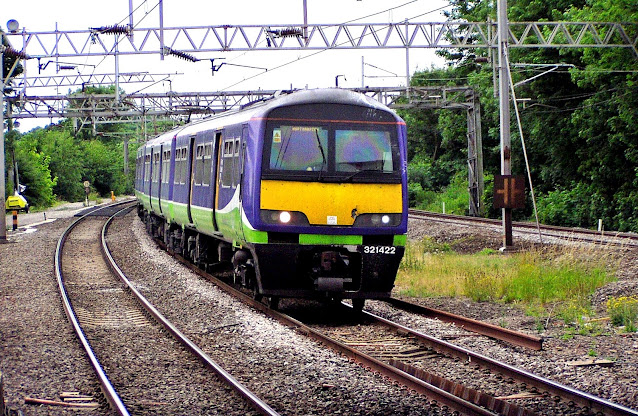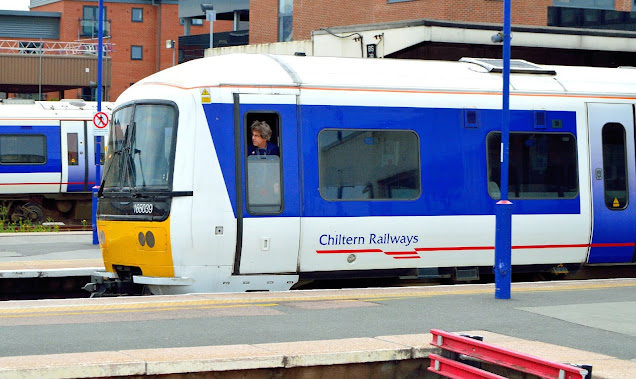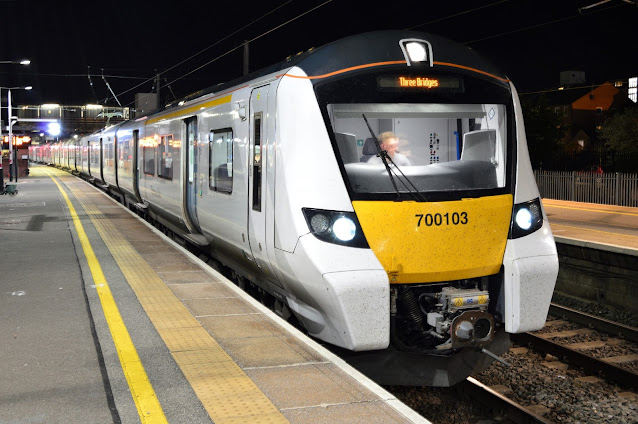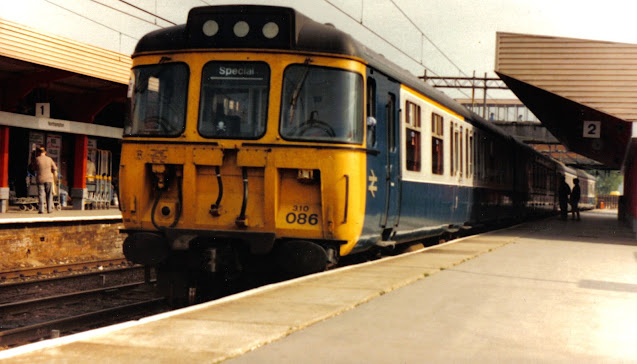Childhood Memories Of A Strange Train
Little did I realise, as I waited on a platform at London’s Waterloo East station on a particular day in the late 1950’s, that I was about to witness purely by chance one of Britain’s railway experiments that far from living up to its expectations, turned out to be a ghastly and expensive failure.
It was a brief encounter that created in its wake a mystery which would remain unsolved for almost forty years.
It was a warm afternoon in early September. I was on the ‘Down’ platform waiting for the train that would take me home to Dover, dressed in my school uniform complete with cap and short trousers which my grandmother insisted I travel in because ‘it made me look neat and tidy’.
To say that I was feeling pretty miserable that day was an understatement. I had recently spent six glorious week’s holiday at my grandmother’s home in Basingstoke, where endless carefree days trainspotting had been spent.
As I sat on a wooden platform seat, idly watching a bored Southern Railway porter wearily pushing a squeaky barrow, piled high with wicker baskets of fluttering racing-pigeons along the platform, a crackling, popping sound caught my attention.
Looking away from the porter and his barrow, I noticed an electric train approaching the railway station. Its power shoes sending out bright blue sparks as they made intermittent contact with the electrified ‘third rail’.
Assuming that it was just another electric train, I was only interested in Southern Railway steam locomotives, I was about to turn my attention back to the pigeon porter when I noticed that there was something distinctly odd about the shape of the approaching electric multiple unit.
With the reflexes of a seasoned ‘train-spotter’, I pulled the dog-eared notebook from my inside jacket pocket kept solely for recording train numbers, and scribbled down the number on the cab front – 4002. As the train squealed to a halt my eyes nearly popped out of my head - it was a ‘double-decker’!
 |
| 8-Car Southern Railway Double Decker Electric Train 4002 |
In green Southern Railway livery the train was four carriages long with a strange configuration of doors and windows unlike anything I had ever seen before. Where the usual row of ‘slam doors’ would have been every other door was missing, replaced by a body panel above which a curved window overlapped the roof area.
It was an unusual-looking machine indeed.
The faces of bored passengers peered out through the windows on two levels, and I wondered how on earth the top tier of travellers gained access to their seats. But, as the doors were opening on the ‘blind’ side from where I stood, it was impossible to see.
 |
| Author's '8-Shot' Kodak Brownie 127 Camera |
Not wishing to miss an opportunity such as this I took hold of the Brownie 127 camera that hung around my neck by a thin black cord and raised it to my eye. I was so preoccupied with trying to fit the long train, into the tiny little viewfinder, I failed to notice my train was puffing into the station from Charing Cross, with the result that at the precise time I pressed the shutter button my train entered the viewfinder.
I would not have a perfect photograph, I thought, but at least I would have some kind of record of this unusual sighting.

Struggling aboard the Dover train as quickly as I could, holding the camera in one hand and my little brown suitcase in the other, I found an empty compartment and dived onto a seat near the window to get a closer view of the double-decker.
To my horror its tail-end was heading towards the end of the platform. It had gone in the time it had taken me to find a seat. In the vain hope of perhaps seeing it disappearing out of the station I jumped to my feet and frantically fumbled with the catches to open the narrow sliding windows, in order to poke my head through.
As I did so my train lurched forward and I fell back onto my seat. My camera hit me in the chest, the suitcase that had been perched precariously on the edge of the opposite seat fell to the floor, spilling the well-folded contents onto the floor amongst the cigarette ends and the little piles of ash.
The platforms of Waterloo East slipped out of sight as the River Thames came in to view and the train soon began to meander through the suburbs of south London. All I could do now was to sit and wonder about what I had seen.
Arriving at my prefab home a couple of hours later my father, who was no doubt overjoyed to see me home again after six weeks of peace and quiet, gave me an old fashioned look as I told him the story of the unusual train.
“Sorry son I’ve never heard of that train”, he said. Perhaps he regarded my tale as yet another product of my active imagination. “I’ll ask at work" he said.
He worked for British Railways at Dover Marine station. "I'll see if anybody knows anything about it”. As it turned out nobody had heard of my mystery train...or perhaps he had simply forgotten to ask.
The years rolled by, I grew up, started work, took up smoking ‘to be a man’, learned to drink beer, did a spell in the Army and got married.
As my childhood stretched a long way behind me, the encounter with the double-decker became nothing more than a fading boyhood memory.
However, unexpectedly in 1995 all that was to change!
After spending a pleasant and productive afternoon photographing the unusual tram, and hearing from its driver the story of how he had rescued the locomotive from a scrap-yard in Belgium, and brought it back to England, I struck up a conversation with one of the N&LR volunteers.
We talked about the various items of rolling stock and locomotives that the railway had accumulated over the years, when for no apparent reason the ‘double-decker EMU’ came to mind. I mentioned what I had seen as a boy and waited for the inevitable blank look that would say, “I don’t know what you are talking about”.
To my great surprise I was wrong about his response. “Oh yes”, he said, nodding knowingly. “I can tell you a bit about that train”.

Sitting in the volunteers’ canteen drinking tea from the inevitable chipped mug, I learned that two experimental 4-car sets, numbers 4001 and 4002, had been built in the late 1940’s to help alleviate the chronic overcrowding on the Charing Cross – Gravesend line in Kent.
Designed by Oliver Bullied, who was also responsible for designing the steam locomotives that would often be seen hauling the 'Golden Arrow’ Pullman train between Dover and London’s Victoria station in the 1950’s, the double-decker was able to carry up to 552 passengers.
“This was quite an astonishing feat”, the volunteer went on to tell me, puffing on a hand-rolled cigarette, “bearing in mind that the conventional electric trains of the time only had a maximum capacity of 400”. I was impressed.
But, as I soon learned, the venture was doomed from the outset.
"Apart from the numerous teething troubles after entering service on 2 November 1949", he went on to tell me, "when it was withdrawn twice in the first month, it proved to be extremely unpopular with the travelling public. Also, it took up twice as much loading time at stations and cost 50% more to build. Despite these problems however, the two trains soldiered on in service until October 1971 when they were finally withdrawn."
I couldn’t believe my luck. My mystery had been solved at last!
“What became of them?" I asked.
Before he could answer we were interrupted by the driver-owner of Yvonne, offering me a footplate ride on the tram which was about to leave the station. I didn’t need to be asked twice, this was too good an opportunity to miss.
Thanking the volunteer, and promising to meet him after the ride to find out what happened to the ‘double-decker’, I left the canteen and climbed aboard the simmering locomotive.
Soon we were rattling and swaying along the track. I was in my element. I had never been in the cab of a steam locomotive and now I was living every schoolboy’s dream.
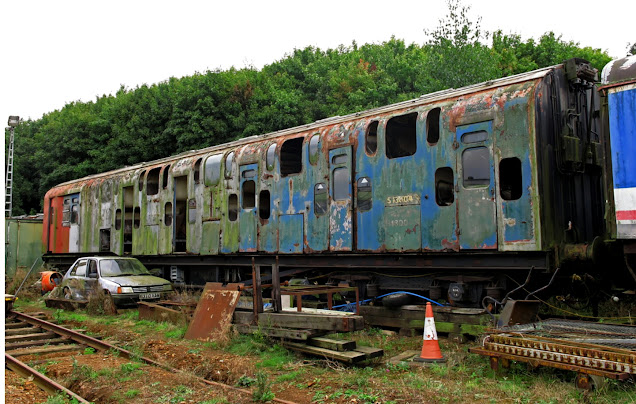 |
| Double-Decker at Lamport Railway, Northampton |
All too soon the ride was over. I climbed down from the cab intending to take a few photographs as the driver prepared to make the return trip, but as I turned this way and that to get a proper reading from my camera’s light meter an astonishing sight grabbed my attention. I couldn’t believe what it was I was looking at. Standing against a set of buffers, vandalised and neglected, was the ‘double-decker’ from my childhood – number 4002! Or at least the driving-trailer carriage of it.
The body panels were rusted, virtually every window had been smashed and the once pristine livery had faded considerably. It was difficult for me to accept that this unique example of railway history could end up in such a pitiful state, so far from its Southern Region home. While at the same time I was delighted to know that it had survived the years, and was ‘over the moon’ to see it once again.
 |
| Double-Decker Train Compartment in dilapidated condition |
On my return to the station I was disappointed to hear that my helpful friend had, by this time, gone home; and no-one else could shed any further light on the fate of the other train. I was now left with more questions than answers.
What had become of sister train 4001? Where were the other carriages from 4002? Are they lying somewhere abandoned and forgotten? Did they fall prey to the scrapyard cutting torch, or were any of them rescued and returned to their former glory?
In my heart of hearts I would like to believe that it was the latter.
Just as those two trains were doomed to failure, so unfortunately was my childhood snap of 4002 taken on that Waterloo East platform all those years ago.
When I collected my prints from the chemist a few weeks later, that particular image turned out to be, ironically, a double exposure. I had forgotten to wind on the film after my previous snap!
Double-Decker EMU Train on YouTube:
Double-Decker Train at Marylebone station.
Don't forget to subscribe to 'Along These Tracks' railway blog to get all new posts and updates sent directly to you.
'Along These Tracks' - blog update:
Previous photos posts are now easier to find.
All blog posts are now listed alphabetically on the right side of your screen; under the heading, 'Previous Photo Posts'.
"I hope this makes your search easier".

